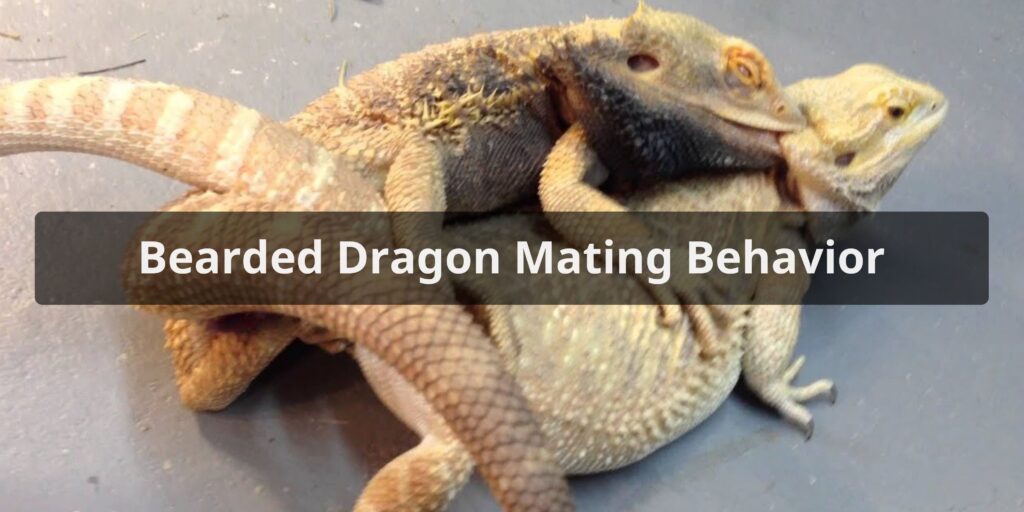Bearded dragons are a popular pet lizard that originate from Australia. Their unique appearance and docile nature have made them increasingly common in homes worldwide. An integral part of their natural behavior that owners may observe is their mating rituals. Understanding bearded dragon mating behavior provides essential insight into their reproductive processes and social dynamics.
Bearded dragons are seasonal breeders that generally mate in the spring and summer months. This coincides with optimal conditions that help ensure the survival of their offspring. Several distinct behaviors characterize their courtship and breeding interactions. Recognizing these mating behaviors enables owners to facilitate healthy breeding and reproduction if desired.
Courtship Displays and Rituals

Male bearded dragons initiate breeding by performing elaborate courtship displays. These visual signals communicate reproductive readiness and attract female interest. Common courtship behaviors include:
- Head-bobbing – Males rapidly bob their head up and down to signify dominance and virility. The frequency and intensity often escalate as courtship progresses.
- Arm waving – One or both front arms are slowly waved in a circular motion to attract female attention.
- Circling – The male will circle around the female in close proximity. This demonstrates his interest and aims to gauge her receptiveness.
- Nuzzling – Male gently nuzzles the female’s body and extremities using his snout to stimulate mating urge.
- Nipping – Gentle biting or grasping of the female’s skin using his mouth to entice mating.
If the female is receptive, she will respond with receptive gestures like arm-waving, passive acceptance of male advances, or touching her snout to his. Rejective behaviors like lack of interest, aggression, or running away will usually deter the male’s efforts.
Mating Ritual
Once courtship is successful, the male will mount the female from behind for copulation. He first grasps her neck in his jaws asserting dominance and immobilizing her. The hemipenes located near the base of the male’s tail are then inserted into the female’s cloaca to transfer sperm.
Mating generally lasts 15-20 minutes. The male may bite the female’s neck harder as the ritual finishes to hold her in place. During this time, the male may also change his grip to mate using the other hemipenis. After separation, the female is generally receptive to multiple mating attempts from the same or different males during a single breeding season.
Bearded Dragon Reproduction
- Egg laying typically occurs 20-40 days after mating.
- Clutch sizes range from 11-35 eggs depending on female size and health.
- Eggs hatch after 55-75 days.
- Babies will measure 3-5 inches at hatching.
- Sexual maturity is reached at 10-18 months old.
Housing Considerations
Owners who want to breed their bearded dragons should provide optimal housing conditions. Important factors include:
- 36″-48″ x 18″-24″ x 16″-22″ adult sized enclosure
- Basking spot temperature of 95°-110°F
- UVB lighting for Vitamin D3 synthesis
- Proper diet with extra calcium for females
- Sanitized nesting box with appropriate substrate for egg laying
- Separate enclosure to isolate the female after breeding
Proper husbandry helps encourage natural breeding behaviors and viable eggs. Owners should thoroughly research breeding requirements before attempting to mate their pets.
Conclusion
Bearded dragon mating rituals are complex innate behaviors that are fascinating to observe. By understanding the purpose of courtship displays, breeding interactions, and reproductive outcomes, owners can better appreciate their lizard’s unique biology. Facilitating natural breeding in captivity requires specialized husbandry to optimize reproductive success. With proper care, mating behaviors can result in healthy, vivacious hatchlings.
FAQs About Bearded Dragon Mating Behavior
How can I determine the gender of my bearded dragons for breeding purposes?
To determine the gender of bearded dragons, examine the base of their tail. Males typically have wider and bulkier tails, while females have narrower tails. Additionally, males often have larger femoral pores on their underside, used for scent marking.
Do bearded dragons form long-term pair bonds during mating, or is it a solitary activity?
Bearded dragons are solitary reptiles and do not typically form long-term pair bonds. Mating is a relatively brief interaction that occurs when a receptive female accepts a male’s advances. After mating, they usually go their separate ways.
How does the female bearded dragon indicate her receptivity to mating?
A receptive female bearded dragon may display head bobbing or arm-waving in response to the male’s courtship behavior. She might also allow the male to approach and mount her, indicating her readiness to mate.
What should I consider when breeding bearded dragons in captivity?
Breeding bearded dragons in captivity requires careful planning, proper habitat setup, and a well-balanced diet. Ensure you have the resources and knowledge to care for hatchlings and consider the potential challenges of breeding, including health risks and space requirements.
How long does the gestation period last for bearded dragons, and what should I expect during this time?
Bearded dragons do not have a traditional gestation period like mammals. Instead, the female stores sperm and can lay fertile eggs several weeks to months after mating. Expect the female to exhibit gravid (swollen belly) signs and provide her with a suitable nesting area.
Are there any specific care requirements for pregnant or gravid female bearded dragons?
Pregnant or gravid female bearded dragons require a warm and quiet nesting area with proper substrate for egg-laying. Ensure she has access to fresh water and a calcium supplement to support eggshell formation. Monitor her closely during this time to provide any necessary assistance.




